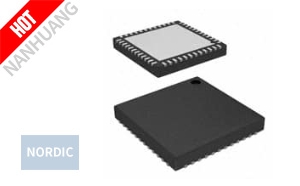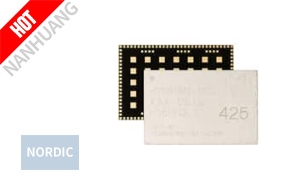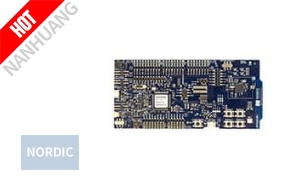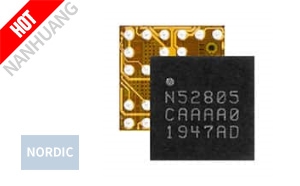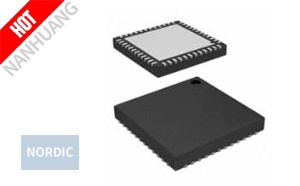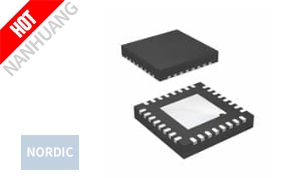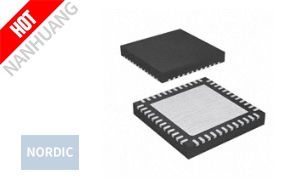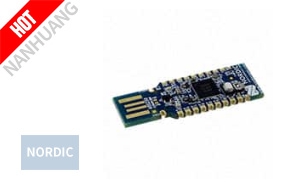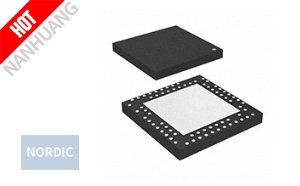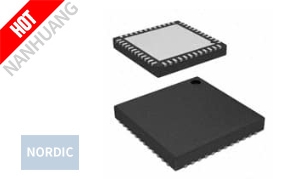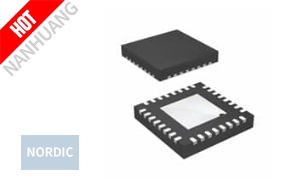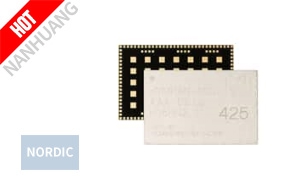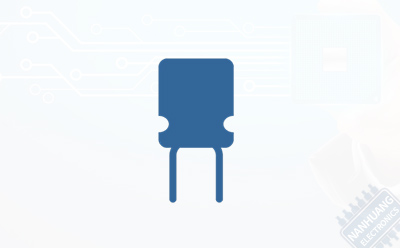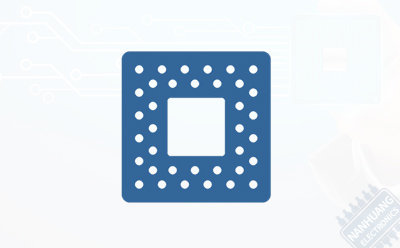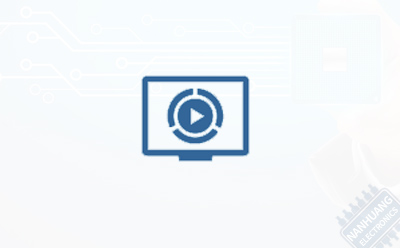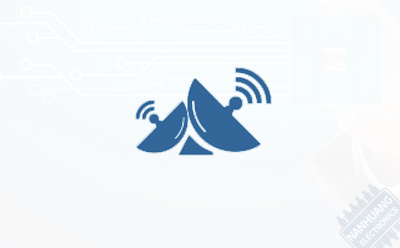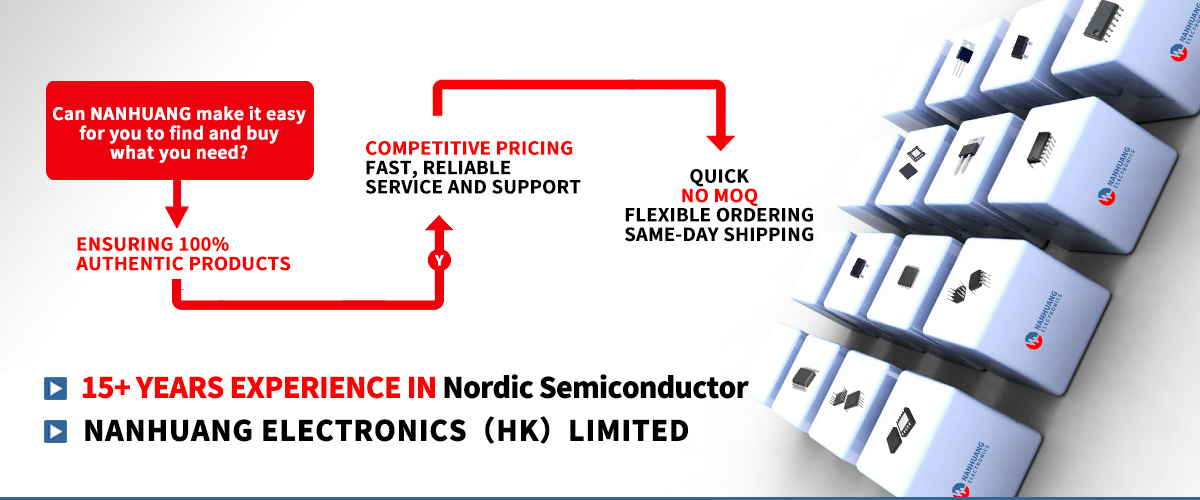
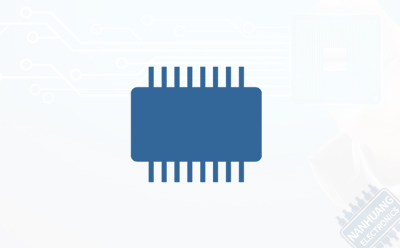
The nRF9160 was built from the ground up with ultra-low power consumption in mind. Nordic's easy-to-use and globally certified solution enable you to achieve absolute minimum time to market. Development is easy through great documentation, full software development kit support, flexible hardware, and complementary tools.
Finally, we have enabled an unprecedented level of integration by making a complete communication and application module with all relevant components in a tiny 10x16mm System-in-Package (SiP).
The nRF9160 uses the Arm Cortex-M33 as a dedicated application processor. It has 1MB of flash, 256kB of RAM, and a broad array of peripherals. Beyond its LTE connectivity and positioning options, it is a device capable to support a broad selection of use-cases and offers real edge computing possibilities for the world of cellular IoT. Nordic provides the open-source nRF Connect Software Development Kit that you can use to develop your customized applications on the dedicated application processor.
LTE-M (also known as Cat-M1) is designed for low-power applications requiring medium throughput. It has a narrower bandwidth of 1.4 MHz compared to 20 MHz for regular LTE, giving a longer range, but less throughput. The throughput is 375 kbps uplink and 300 kbps downlink, providing approximately 100 kbps application throughput running IP. It is suitable for TCP/TLS end-to-end secure connections. Mobility is fully supported, using the same cell handover features as in regular LTE. It is currently possible to roam with LTE-M, meaning it is suitable for applications that will operate across multiple regions. The latency is in the millisecond range offering real-time communication for time-critical applications.
LTE-M is perfect for medium-throughput applications requiring low power, low latency, and/or mobility, like asset tracking, wearables, medical, POS and home security applications.
NB-IoT (also known as Cat-NB1) is a narrowband technology standard that does not use a traditional LTE physical layer but is designed to operate in or around LTE bands and coexist with other LTE devices. It has a bandwidth of 200 kHz, giving it a longer range and lower throughput compared to LTE-M and regular LTE. The throughput is 60 kbps uplink and 30 kbps downlink. It is suitable for static, low-power applications requiring low throughput. With the introduction of Cat-NB2 in 3GPP release 14, you can achieve a throughput of 169 kbps uplink and 127 kbps downlink if the network supports it.
NB-IoT is perfect for static, low throughput applications requiring low power and long-range, like smart metering, smart agriculture and smart city applications. It also provides better penetration in, for example, cellars and parking garages compared to LTE-M.
Energy efficiency is a cornerstone of cellular IoT technology. Both LTE-M and NB-IoT are designed to make years of operation from a battery-driven power source a reality. This has been achieved by using a range of techniques. Data throughput is lower than standard LTE, and this brings the energy consumption down due to slightly simpler modulation schemes and less complex radios. However, as with all low power communication technology, the real key is managing sleep, wake-up and communication events effectively and efficiently.
Two energy efficiency innovations make a significant contribution to LTE-M and NB-IoT power-saving capabilities, eDRX (Extended Discontinuous Reception) and PSM (Power Saving Mode). Both eDRX and PSM work in harmony to make battery operation for many months and years possible.
LTE uses a system of paging cycles which are 1.28 seconds in duration. A paging cycle is the window of time a device can be contacted by the network for an exchange of data. The resting period between the paging windows is known as hyper-frames. The benefit of eDRX is that it allows ‘N’ number (40+) of hyper-frames to occur at a period of 10.24 seconds each before a device wakes up again for activity in its next paging window. In this way, devices can sleep and talk in a highly efficient and synchronized manner.
PSM mode simply enables the device to enter a deep sleep mode for whatever time is necessary, this could be perhaps an hour, a day, or weeks. For applications that have no real-time requirements and only communicate very periodically, for example, an irrigation system in agriculture, this brings very high levels of energy conservation and can mean products can run on a few AA-sized lithium batteries for up to 10 years.
The nRF9160 is optimized to take full advantage of all the power-saving efficiencies offered by LTE-M and NB-IoT including eDRX and PSM.
Cellular networks offer an unrivaled set of performance characteristics in the LPWAN sector. Cellular operates in licensed bands, the importance of this cannot be underestimated. Licensed bands come at great expense, typically billions of dollars, and for good reason. When you own the band, you can dictate and guarantee the performance and reliability of communication within those bands. You can also minimize wasted energy due to interference between devices.
Cellular is designed for very high Quality-of-Service (QoS). There are a known number of connections and these can be accommodated and managed accordingly. Unlicensed bands have no such guarantees and anyone can operate there. For guaranteed performance and reliability licensed cellular is a clear winner for LPWAN.
Cellular 4G networks are already in place with dense cell tower coverage over most cities in the world and most countries having a high degree of country coverage. This puts cellular in a position to be ready to deploy at a huge scale with minimal infrastructure building.
Because LTE-M and NB-IoT are designed to be spectrally efficient and because typical use-cases are low activity by nature it will be possible to connect several 10s of thousand of devices to a single base station. Typically, cell towers host several base stations, and this means deployment density can truly happen at a massive scale.
LTE networks have unrivaled security measures as standard for the LPWAN sector. At the device level is the SIM card or UICC, this is a secure element with a definitive identifier embedded in hardware for that particular device. It ensures authentication to the cellular service subscription and encrypts data over-the-air. Communication with LTE-M is typically TCP/IP, the language of the internet, and as such is equipped with the highest degree of security measures that are in current use. Transport Level Security (TLS) is the mechanism of secure data transactions and is the state-of-the-art for internet security.
The nRF9160 implements significant extra security measures to further enhance device security including Arm TrustZone and Arm CryptoCell for secure and trusted execution and key generation and storage.
In the same way that updates are critical to any connected computer's security, any connected device should be capable of downloading firmware updates over-the-air. This is to ensure that your device can be updated to fix security holes discovered after deployment either in standards or implementation. It also allows you to optimize your device’s performance over time and even deploy new features.
Do you know more about Nordic's product uses, technical documents, and solutions related to Low power cellular IoT? Then quickly get in touch with Nordic Distributor - NANHUANG!
- IC RF TXRX+MCU BLUETOOTH 48VFQFN
- IC RF TXRX CELLULAR NB-IOT
- EVAL KIT FOR NRF52833 SOC
- IC RF TXRX+MCU BLUETOOTH 5.2
- IC RF TXRX+MCU BLUETOOTH 48VFQFN
- IC RF TXRX+MCU ISM>1GHZ 32VFQFN
- IC RF TXRX+MCU BLUETOOTH 48VFQFN
- USB DONGLE BLE + MULTIPROTOCOL
- IC RF TXRX+MCU 802.15.4 73VFQFN
- IC RF TXRX+MCU ISM>1GHZ 48VFQFN
- IC RF TXRX ISM>1GHZ 32VFQFN
- IC RF TXRX+MCU CELLULAR LTE-M
- Nordic Semiconductor announces multi-function Power Management IC (PMIC) with unique system manageme
- Shanghai China rapid transit system uses Nordic low-power wireless technology to get passengers to t
- Nordic Semiconductor announces the introduction of the nRF52811 System-on-Chip (SoC)
- Nordic Semiconductor announces the nRF21540TM RF Front End Module (FEM), its first power amplifier/l
- Nordic Semiconductor announces the nRF52805 Bluetooth 5.2 System-on-Chip (SoC), the seventh addition
- Nordic Semiconductor announces the nRF5340TM high-end multiprotocol System-on-Chip (SoC) has entered
- Nordic’s nRF52 and nRF53 Series Bluetooth customers will be the first to able to add AI and machine
- Nordic Semiconductor announces the launch of its first power management IC nPM1100
- Advanced antenna manufacturer KYOCERA AVX joins Nordic Partner Program
- Nordic Semiconductor to power Samsung Galaxy SmartTag for locating missing valuables
- Car charging gets smart with Nordic Cellular IoT and Bluetooth LE-powered portable EV charger
- Nordic-powered telematics gateway forms heart of smart vehicle ecosystem


